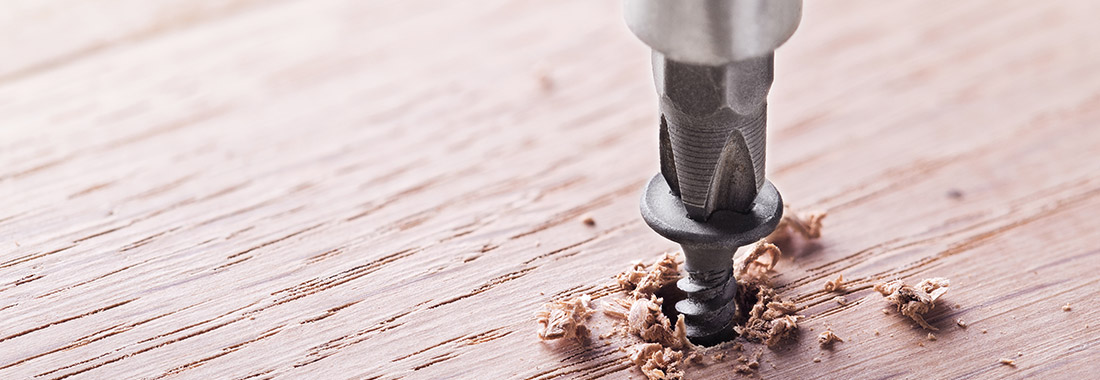

Buying the right wood screws for your project can be easy. But depending on the materials you will be working with, there can be a wide variety of screw options to choose from. In this guide we will look at some of the basics to bear in mind when shopping for screws, along with the main differences between wood and other types of general purpose screws.
What are wood screws?
It’s worth noting that both wood screws and metal screws are available in a similar range of lengths and thicknesses. This can sometimes make it difficult to distinguish between the two types.
Nevertheless, wood screws and other types of screws are designed with very different applications in mind. It’s therefore useful to note that some manufacturers differentiate between the two products by way of colour:
- Silver screws: For metals and other materials
- Gold screws: Often referred to as yellow wood screws, and suitable for use with wood
As this isn’t always the case with 100% of screws available, double check before buying.
Wood screws are designed specifically to be driven into wooden materials. While it may technically be possible to use some types of metal screws in wood, it’s worth remembering that wood screws are designed with this exact purpose in mind. They guarantee superior and longer lasting results. They are also far easier to drive into wooden surfaces.
Wood screw and metal screw differences
The primary characteristic of a wood screw is usually its shorter threading – typically up to an inch or so and just across a portion of the body. The thread of a wood screw will almost always be sharp and particularly aggressive, enabling it to bore into wooden materials and create a secure fix.
Metal screws typically have a much longer threading of 2 inches or more. You’ll notice that the threading pattern is different to that of a wooden counterpart, with metal screws featuring threading across the entire body of the screw. The number of threads per inch on a metal screw is also usually greater.
Wood screw drive types
Wood screws are available in the same basic designs and configurations as all other types of screws:
- Slotted screws: This is the classic type of screw that is compatible with the ‘flat head’ screwdriver, though is not typically the preferred choice of the carpenter as the screwdriver can easily slip out of place.
- Phillips (cross-head) screws: First introduced almost 100 years ago, cross-head screws provide exponentially more grip and improved torque when driving screws into a variety of surfaces.
- Square-head screws: A relatively niche type of wood screw, which is nonetheless capable of providing excellent grip and is often used to accommodate a removable ‘cap’ to hide the head of the screw.
- Star-drive screws: Configured in a star-shape, which is designed to amplify the benefits of the Phillips-head screw for maximum grip and torque.
Selecting a screw drive type is predominantly a case of personal preference, but flat head screws are not usually the primary choice for day to day carpentry work.
Wood screw Q&A
Some of the commonly asked questions about selecting and using screws for the best possible results:
How do I know what screw size I need?
Carefully measure the material thickness you’re working with, and ensure the screw length you choose is just less than the total thickness of the combined elements. There will always be an element of trial and error involved when it comes to finding the perfect screw size.
Can I use a metal screw in a wooden surface?
Metal screws are usually compatible with wooden surfaces, but do not perform nearly as well as wood screws and should therefore be avoided where possible.
Can I use a wood screw in a metal surface?
Under no circumstances should you attempt to use a wood screw in a metal surface. Is not designed to cope with the hardness of the material and the thread design will be unsuitable.
Are all wood screws suitable for indoor and outdoor use?
While all types of wood screws are suitable for indoor use, not all screws are designed to withstand the elements. Always check carefully before buying.
How tightly should I secure a wood screw?
Tight enough to ensure a strong and reliable connection is created between the two materials. But not too aggressively or the screw head will bore too deeply, damaging the material’s surface.
Are wood screws suitable for all types of wood?
Not always. You may need a particle board screw when working with certain wooden materials such as chipboard or MDF.



